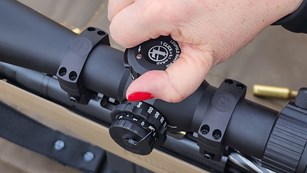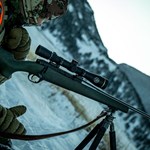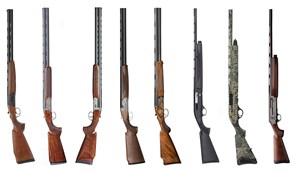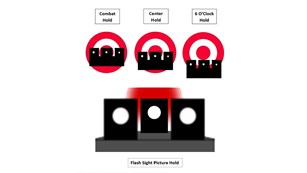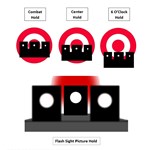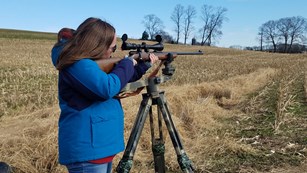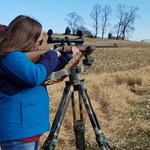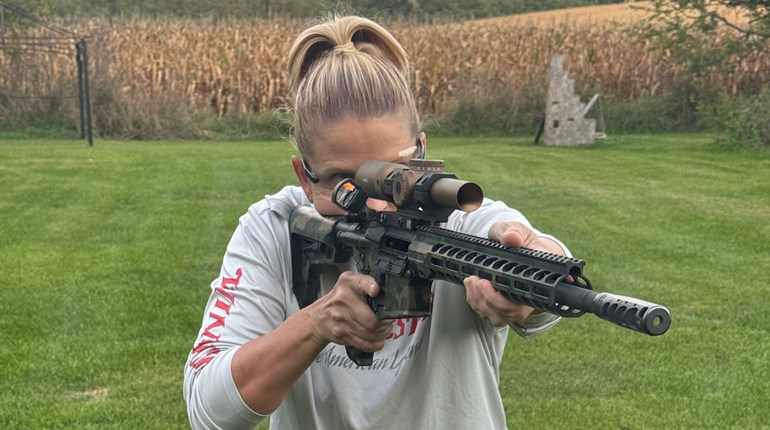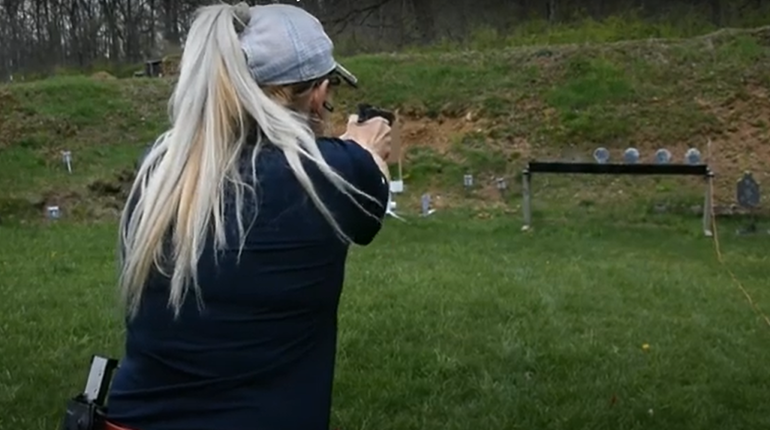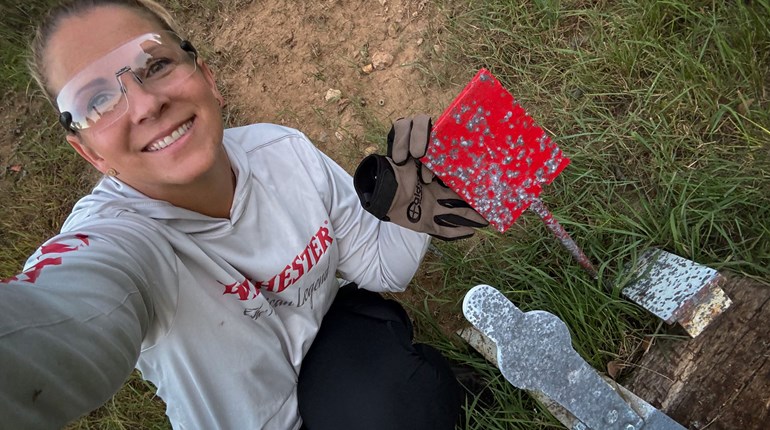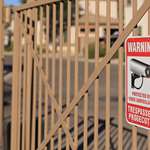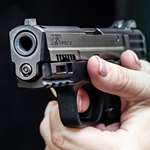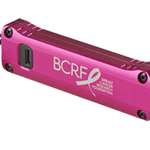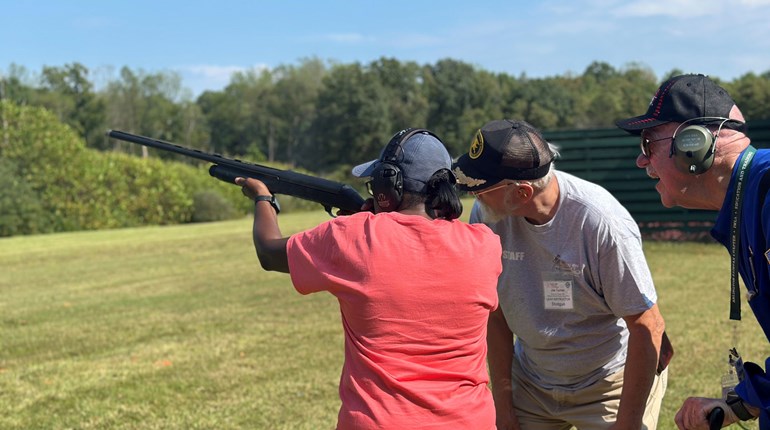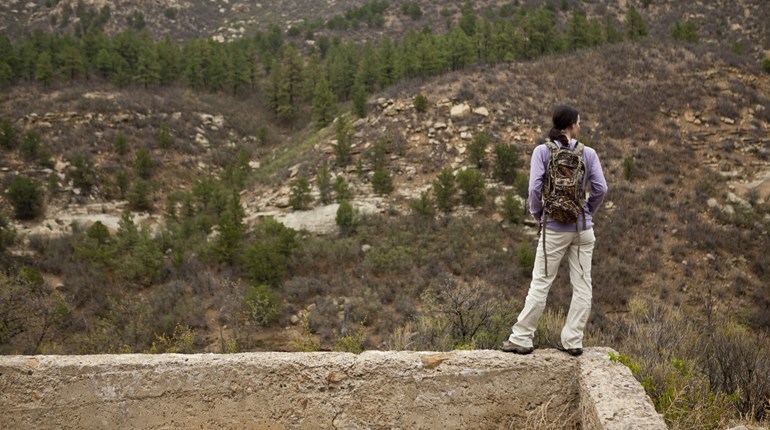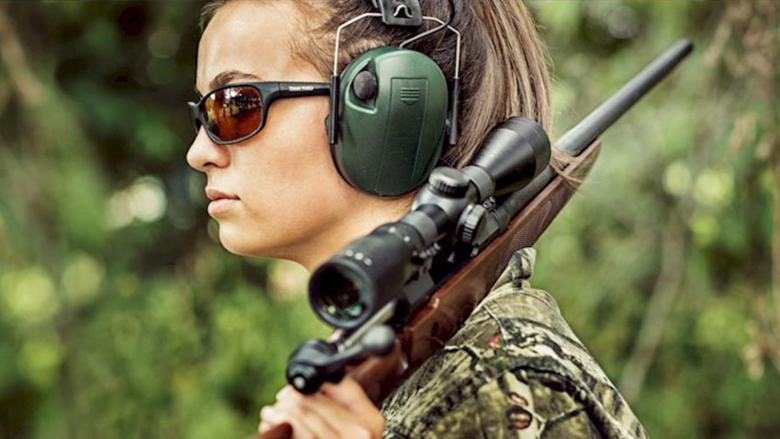
For many hunters, one of the most enjoyable ways to hunt deer is from a blind. There are many reasons for this—from the concealment that allows you to move without alerting animals, to the ability to heat the inside and stay warm, to the use of a rest or tripod to make accurate shots easier. Here are some things to keep in mind when you set up your blind and tripod.

Consider Range of Motion
While hunting from a blind allows you to move without potentially giving away your presence to deer, your movement is still somewhat restricted. Usually your port is a window, and you are set up over and area, such as a known deer trail. You might only be able to see one area through that window in your blind. Consider how you might have to swing or move your gun to get a hit and whether you can do that quietly and without tipping your tripod. Hint: a weight or sandbag hung under the tripod can lend stability.
If you are able to, set up your seat behind your tripod before your hunt, check how manageable it will be to move and track an animal as it comes into view. Does your tripod allow for panning or rotating motion? Look for one with rotation and tilt. Will it be simpler to use a heavy bag on top of a tripod, and just “pan” by rotating your gun on the bag? Using a tripod this way is common for PRS shooters and the heavy, sand-filled bags make for a great shooting position. It also allows for a much less restrictive type of movement, but takes a little more practice to feel confident.
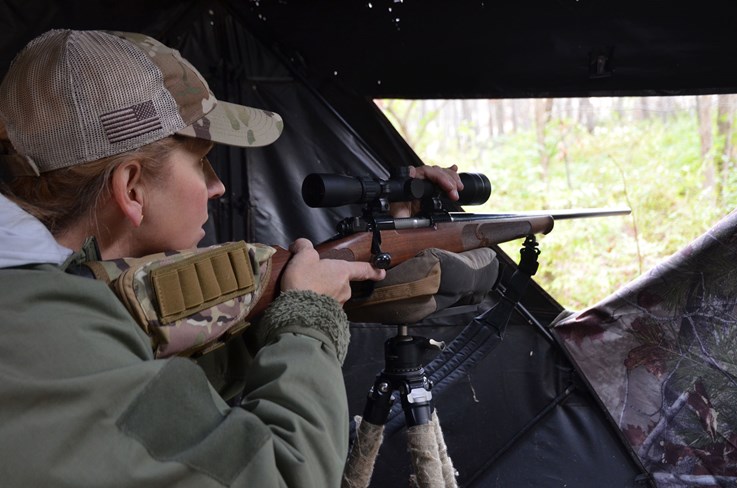
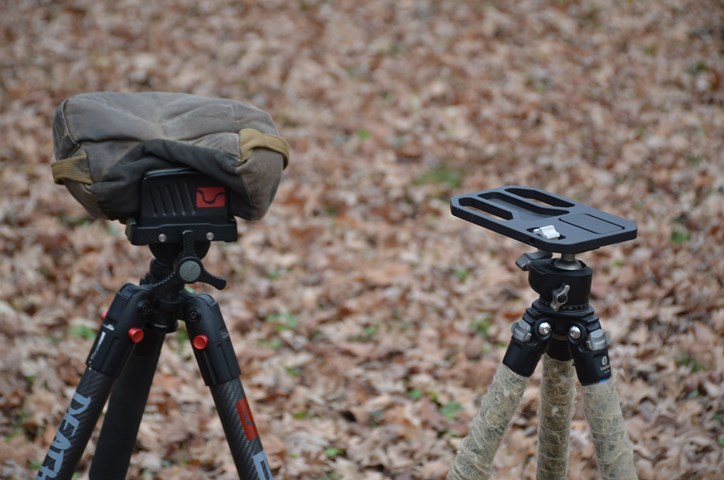

Pro tip: If you plan to use a bag on top of your tripod, using something like an Arca Plate gives you a really wide platform, but you can also set a bag on a normal tripod as well. Just consider it will be higher, and you will have to shorten the legs a little more than normal. Also, set up your tripod with the pan and tilt control knobs on your support side (for right-handed people, this means set them on the left). This allows you to adjust and tighten the controls while looking through the optic. If you must adjust while trying to make a shot, having it set up this way and practicing with it will really help!
Set the Height of your Tripod Legs
Whichever tripod or rest you use, the height matters, especially if you are in an elevated blind, such as an enclosed tree stand. If you need to pivot or tilt to aim at a deer that’s walking underneath you, the height is even more of a consideration. And you need to ensure that the legs all have solid contact with the ground.

Ideally, you would make a trip to your stand before hunting season to test out your chair, tripod and make sure everything is set up properly. But if you are hunting public land or your timeline doesn’t allow for it, test it out at home. Position yourself and test the tripod leg height while seated. If you don’t know what you will have for a seat, it’s a good idea to figure out a setting using a low chair and then use a black marker to mark the legs. This will make it easier on opening morning by being faster and making less noise and movement. You could also mark out the height for a kneeling position or sitting position, if you are using a ground blind or anticipate an elevated shot (say you’re hunting elk in the mountains). Having just a little time behind the tripod will help you to understand what’s going to be the most efficient on your hunt and increase your odds of making the perfect shot.
Setting up Multiple Angles of Fire
What if your blind overlooks a trail and you know deer can approach from multiple directions? Do you set up more than one tripod? Can you move your tripod? If you have multiple tripods or means of resting your firearm, the thinking person says to set them up. A swivel seat that allows you to change your position quietly, without moving your body too much, makes this more efficient.
Just like hunting without a blind, you want to make sure that you are not visible to approaching game. Don’t let a window behind you backlight you. While it might be a nice idea to have two completely opposite views, being visible from two opposing directions might give away your position. It pays to really study the area that you plan to hunt and what the animals’ movement patterns are. But barring time to do that, positioning yourself inside, out of sight, and minimizing movement will give you a solid starting point.
Being able to set up your deer blind and position your gear, ready your chair, tripod, heater and all the things you want is a plus to hunting on private land. The blind and gear you place ahead of hunting season also will become less worrisome to the deer—even if just not smelling strange to them. Placing a blind ahead of time also gives you chances to scout deer trails and look for scrapes. But if your only option is hunting public land, a pop up blind, a folding stool, and a tripod can be a quick way to get yourself out of the wind, lower the risk of game seeing you, and give you a better chance at bringing home meat from your hunt. And it’s a bonus that you can move it somewhat easily, should you decide to change locations.


